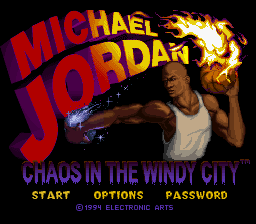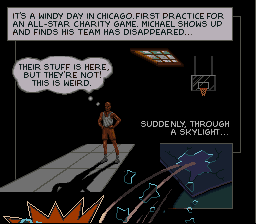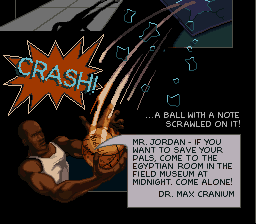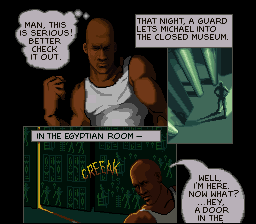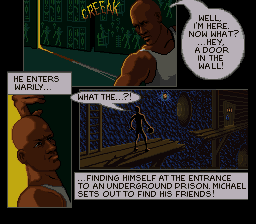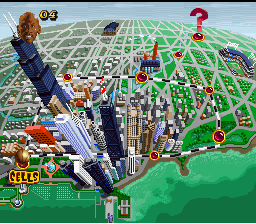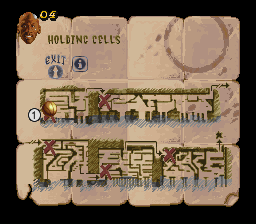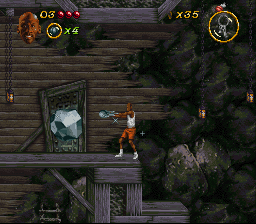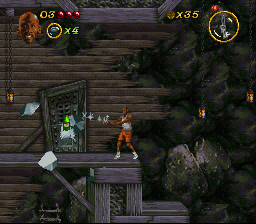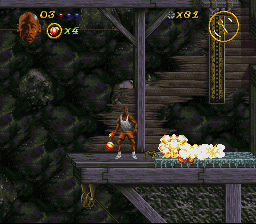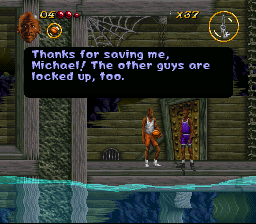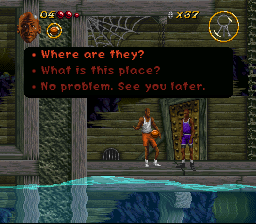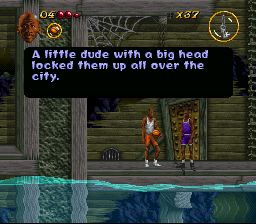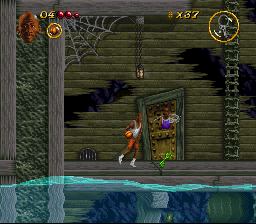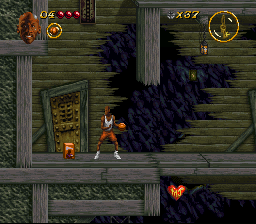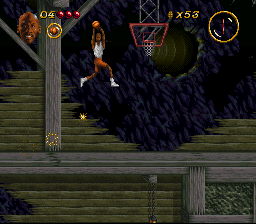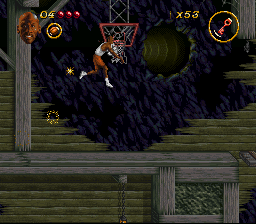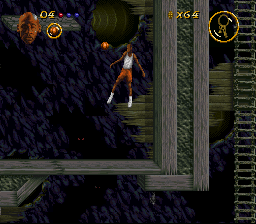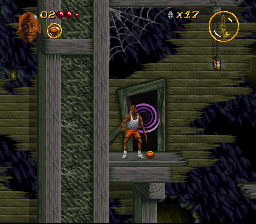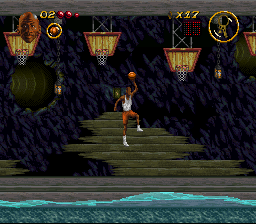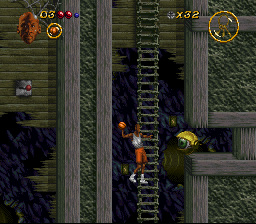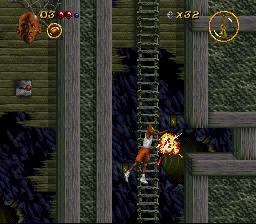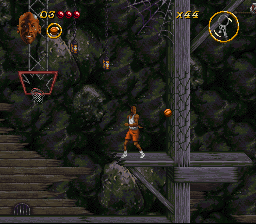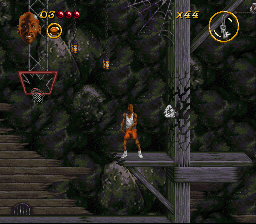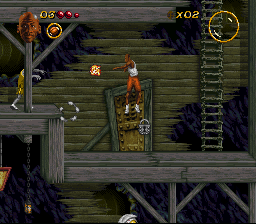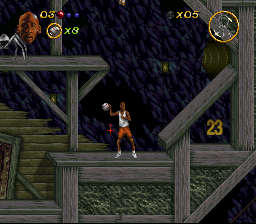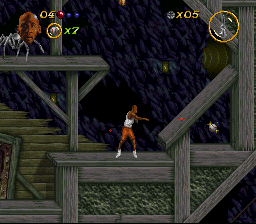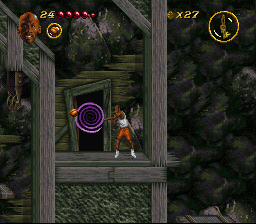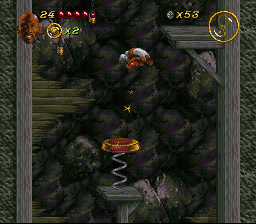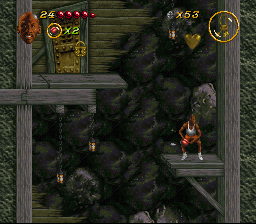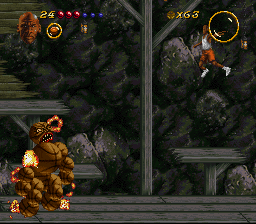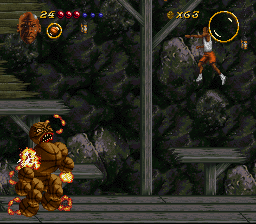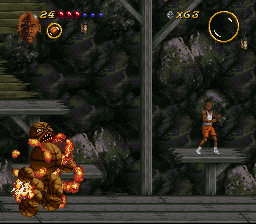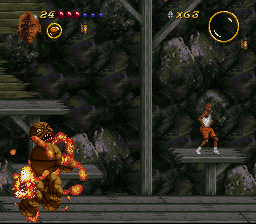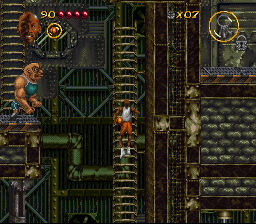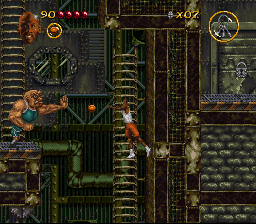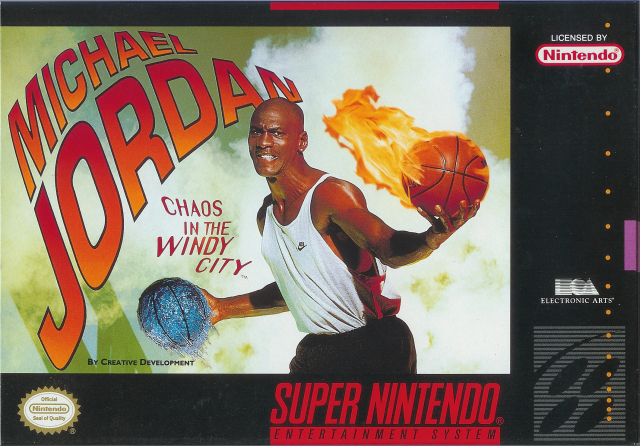
The Super Nintendo enjoyed many years of commercial and critical success, but of all the years I’ve always considered 1994 to be its most memorable. It just seemed to have the best games that year in terms of quality and quantity. 32-bit systems were starting to seep into the pages of gaming magazines in ’94 but it was still largely all about 16-bit. ’94 saw the release of such iconic titles as Super Metroid, Super Punch-Out!!, Donkey Kong Country, Final Fantasy III and so much more. EGM and GameFan didn’t miss a beat, either, as I felt ’94 was also the best year for those respective magazines. 1994 was just a great time to be a kid. But aside from your AAA classics, there were a bevy of games that flew under the radar that year. Michael Jordan: Chaos in the Windy City was one of them. Sure, the concept was bizarre. Control one of the greatest basketball players ever in an action platformer? Doesn’t exactly ring my bell. And made by EA Sports of all people? They weren’t known for their action games. But when I saw it in the pages of GameFan, a big part of me was instantly intrigued. It took me two decades to finally play it…
AIR JORDAN
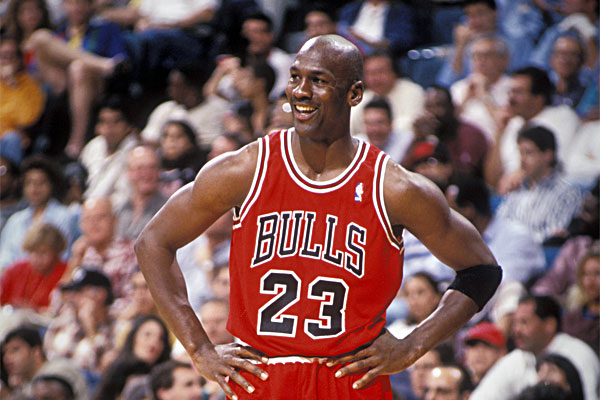
Michael Jordan was a freak athlete. Born February 17, 1963 (happy belated, Mike), Jordan went on to become one of the most iconic figures in all of sporting history by the year 1993. However, with the tragic murder of his father during that summer, Jordan announced his retirement from the game of basketball on October 6, 1993. Citing the death of his father and a loss of interest in playing basketball, Jordan went on to pursue his dream of playing professional baseball.
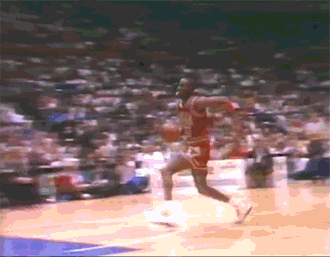
He toiled in the Minors for a year and a half before declaring his infamous two words on March 18, 1995: “I’M BACK.” Jordan went on to 3-peat once again, leaving the game with six championship rings and an amazing 6-0 record in the NBA Finals. Today he is still considered in many circles as the greatest NBA player to ever play the game.
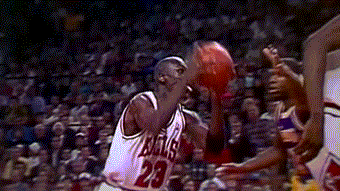
CHAOS IN THE WINDY CITY
Michael Jordan: Chaos in the Windy City came out while Jordan was attempting his hand at playing baseball in the Major Leagues. The game acknowledges this and uses it (somewhat) as part of its storyline.
Jordan unearthing an underground prison where his friends are held captive deep within the bowels of a museum? You can’t make this stuff up… and this is how our adventure begins!
Rescue your friends in the holding cells (five levels there) and make your way through the rest of Chicago. This includes riding the local trains, the laboratory, the factory and more. Unfortunately, the lab and factory have five levels each themselves and the backgrounds can get a bit repetitive and dull. Although the game has a decent number of levels, they’re not spread out very well since the theme is repeated for five levels.
WEAPONS OF CHAOS
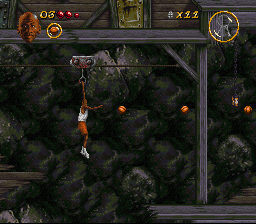
Mike begins the game with a regular standard orange basketball. It shoots in a straight line and has unlimited ammo. It shoots out pretty fast too and you can fire multiple balls at once. For a standard default weapon it’s more than serviceable.
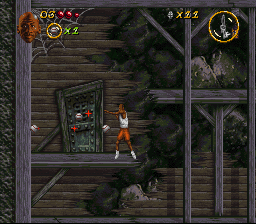
I see what you did here, EA. Clever. One of the balls is, appropriately, a baseball. I like this one as you can fire it through walls and solid objects. Sweet!
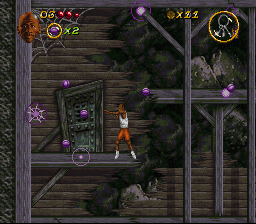
Bounces around when it hits a horizontal surface, or splits into two balls when it hits a vertical surface. I like using this in tight spaces — it turns you into a killing machine.
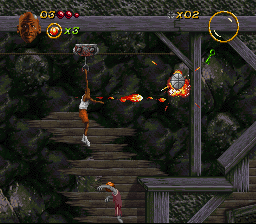
Does double damage to enemies. Spike it to create a trail of flame along the floor.
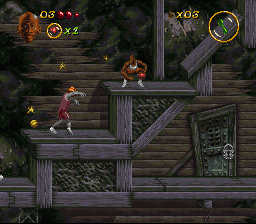
Tracks down enemies who are within range. Spike it to split it into multiple missiles. I like how spiking certain balls can change its use.
Channeling his inner Sub-Zero, Mike’s Blue Ice ball freezes most enemies into a solid chunk of ice. It’ll shatter if you hit it with another ice ball. Enemies will thaw out and escape if you don’t destroy them while they’re frozen. You can stand on frozen enemies and use them as platforms. Spike an ice ball to coat part of the floor with a layer of ice and make it slippery.
Spiking certain balls can lead to different effects. It added a nice layer [I C WAT U DID DERE -Ed.] to the game and also added some strategy in addition to picking which ball to use.
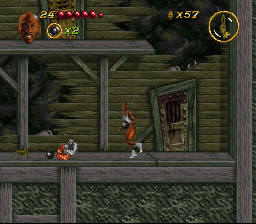
Doesn’t go far if you throw it, rolling along the floor to hit enemies. It explodes when spiked, doing one point of damage to all enemies on-screen.

It makes everything shake when you spike it, doing massive damage to all enemies within range.
THE HOLDING CELLS
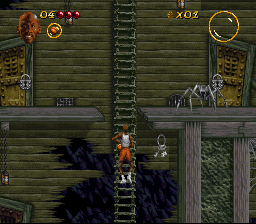
Be on the look out for your friends, and watch out for mutant spiders. Keys are key (sorry) to success.
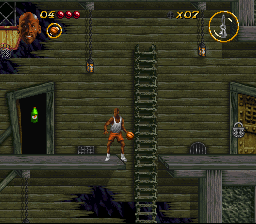
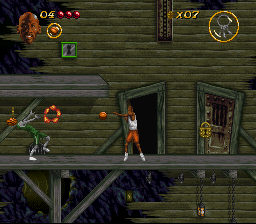
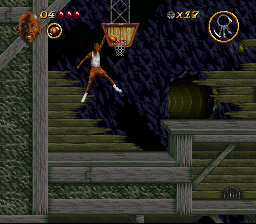
Backboards are scattered throughout. Dunking on them has a different effect. Some drop items (like keys) when you dunk. Others may even damage all enemies on-screen. It’s a neat little way of bringing basketball into the gimmick.
Saving your friends opens up a bit of dialogue. It’s nothing to shout about, but it adds a bit of variety as it breaks up the action a bit. Hell, you may even get a key for your troubles at the end. But the way Mike’s friends evaporate is slightly bizarre.
Sometimes there’s a weak wall that Mike can bust through. Ah, Wheaties. The Breakfast of Champions.
Dunking in an action platformer — who woulda dunk it… [har har -Ed.]
Spiking the ball isn’t just a secondary option, sometimes it’s necessary to advance. Spike balls to break away weak floorboards.
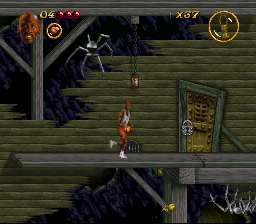
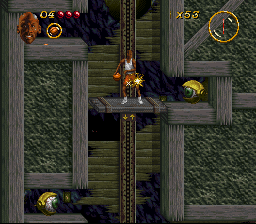
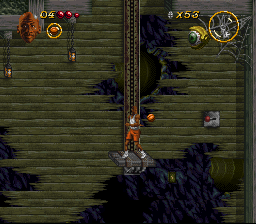
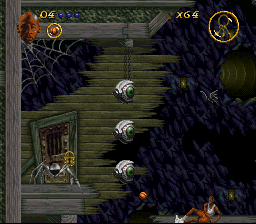
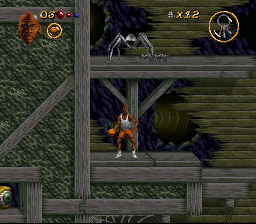
Purple swirling doors lead you to bonus bits that range from slam dunking to killing enemies to bouncing off giant springs. Find these doors to unlock extra goodies and points.
Bastards zip fast so be ready for the fast pitch. BOOM [SHAKA LAKA -Ed.]
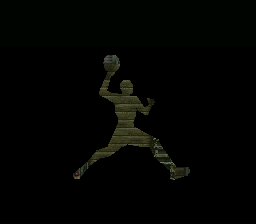
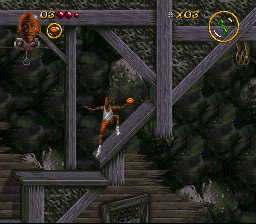
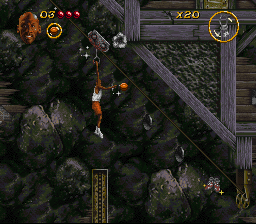

Whoever thinks that Jordan never passes never played this game.
Enemies on a tier below you can be damaged by the spiking technique.
Defense is played in the form of nullifying. Wish more games did this.
Use the White Knuckleball to retrieve items lodged away. Sweet!
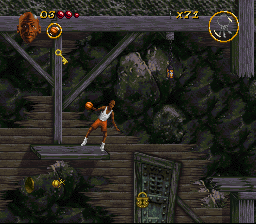
You know what’s cool about that animation above? You know how in most games if you let it ride out nothing happens but the status quo? Well, not so here. If you leave Mike in that vulnerable position for more than a few seconds, he actually falls over. I was quite taken aback the first time I saw it as I don’t recall many platformers from the ’90s that did this as well. The animation is ugly but I can appreciate the concept.
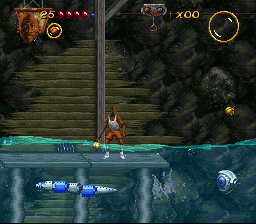
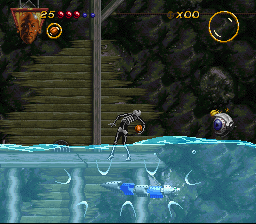
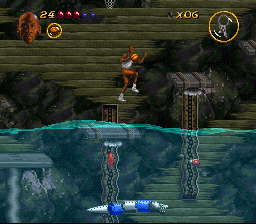
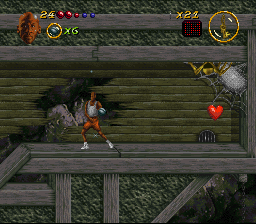
Some backboards have the number 23 on them. If they do, slam it home and you’ll be rewarded with everything freezing for 15 seconds. A shot clock just like the NBA appears on the screen, counting you down. Pretty cool integration.
Speaking of timers, there are none in this game. I hate it when there’s a timer that presses you to zip through a level. A generous timer is all good in my book but even better is when there’s no timer at all. Make sure you take the time to explore all the nooks and crannies, as you don’t want to miss out on bonus doors.
Golden hearts add another ball to your health meter. Super valuable!
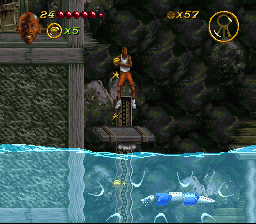
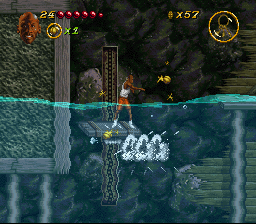
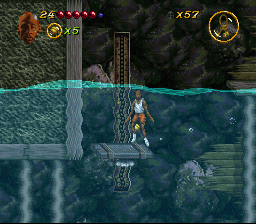
D’OH! MJ might be the GOAT when it comes to basketball. But when it comes to swimming he doesn’t stand a chance! He automatically bites the dust the moment his head is submerged in water. Boo! Come on…
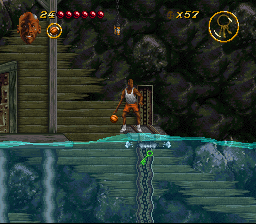
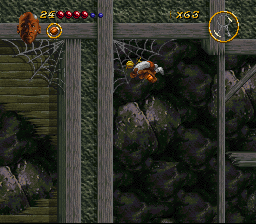
Press the L button to break into a sprint. Jumping while running allows Michael to do a super jump, which allows him to reach items in faraway places. Not bad, right? Until you factor in EA Sports wasted the L button on running when they could have made running double tap. Then that frees up the L button to cycle back on the special balls. Cycling one way only with the R button can get a bit annoying when you have all eight balls in possession.
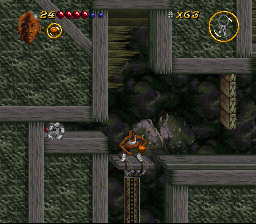
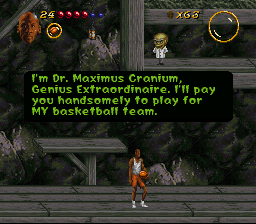
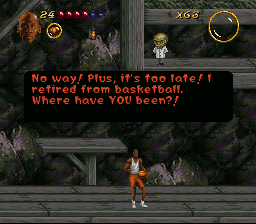
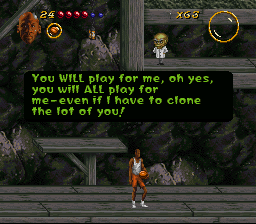
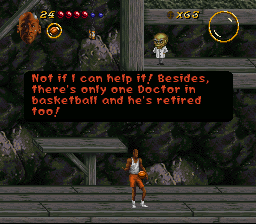
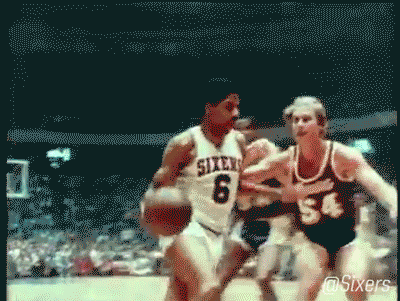

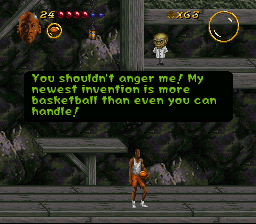

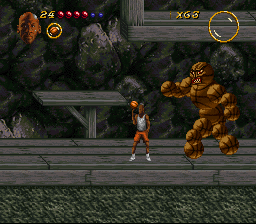

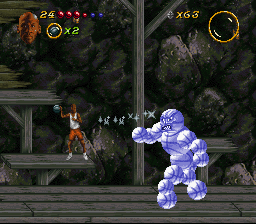
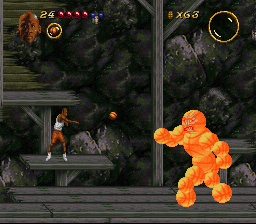
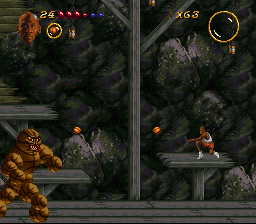
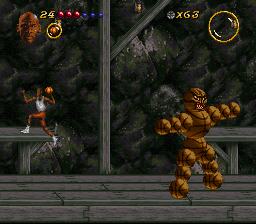
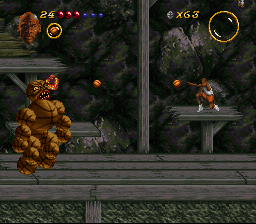
Remember the epic shot Jordan hit over Craig Ehlo in the Playoffs on May 7, 1989? Props to EA Sports for recreating that celebration here.
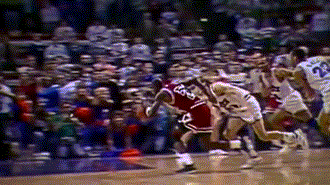
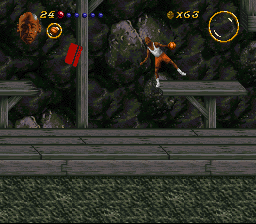
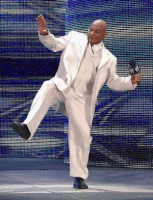
THE L TRAIN
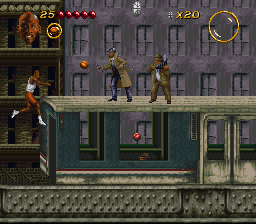
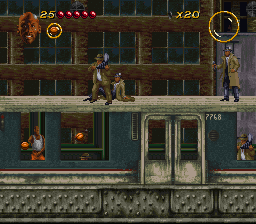

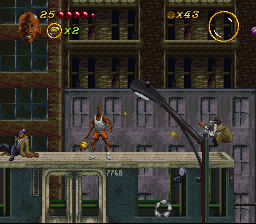
THE FACTORY
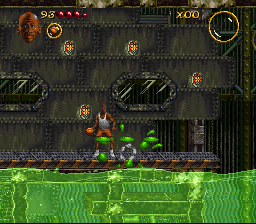
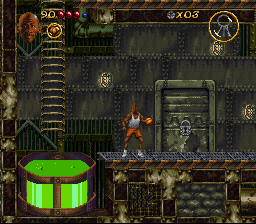
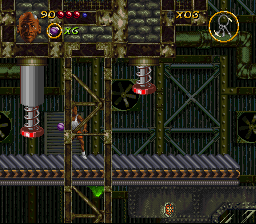
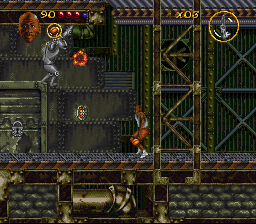

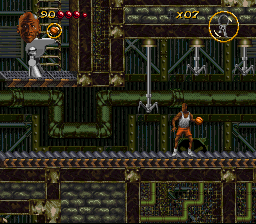
Charles Barkley on steroids? He has good defense. So not Chuck, then.
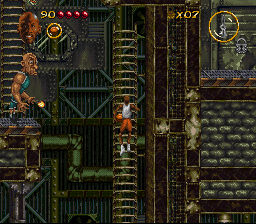
PSST, WHAT’S THE PASSWORD?
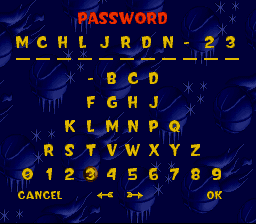
As many action platformers did from the 16-bit era, there’s a password system in place. However, you’re only awarded a password after defeating the entire section. For example, the Laboratory has five levels. You have to beat all five to get the password rather than just one level. As far as user friendliness is concerned, passwords are 11 characters. Not the best but definitely not the worst. Although the passwords do take into account your lives. Beat a section with 0 lives? That password is essentially useless. Pretty unforgiving…
WHAT THE CRITICS SAID
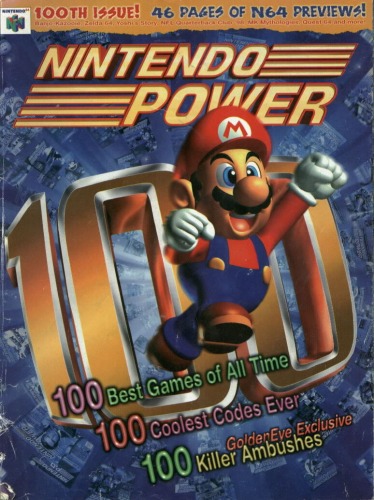
Michael Jordan: Chaos in the Windy City is one of those games that you expect to be crap, but isn’t. It has a pretty decent reputation with most retro gamers. GameFan gave it respectable scores of 82, 79 and 74%. Browse online and you’ll see most people find it to be pretty decent despite the odd use of the license. However, Nintendo Power back in 1997 had a different opinion. They posted a list of their top 100 games but they also posted a list of their top 10 worst games. Chaos in the Windy City made that list at #7. That always bugged me. Especially when they wrote in the description: “Not that this game was even that bad, but it wins the award for Totally Blowing the Best License in the Universe. What’s next, Michael Saves Nike Town?”
![[I'M DEAD! Not... -Ed.]](http://rvgfanatic.com/wordpress/wp-content/uploads/2017/02/MicCitWCCritics.png)
CLOSING THOUGHTS
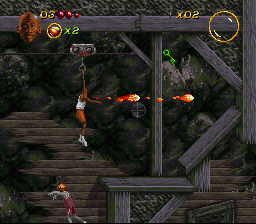
Like I said earlier, 1994 was a good year to be a Super Nintendo owner. We got so many good games. But it wasn’t a good year to be a Michael Jordan fan. We did get Chaos in the Windy City as a bittersweet reminder that Jordan had retired from the game of basketball. His minor league baseball career was pretty bad in 1994, but thankfully his video game turned out to be fairly decent. I like the versatility of the different powered balls. I also like the locked doors and keys formula that EA incorporated here. It helped to give it a slightly different feel from most other action platformers. The visuals are grimy and pretty much the complete opposite of most 1994 SNES games in terms of style and tone. The animation could have used some extra work, though.
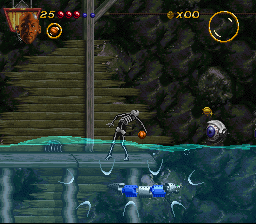
For all the nice things Chaos in the Windy City does, however, there are a few missteps here that prevent it from being a hidden gem. For starters, the music is pretty forgettable. And what I do recall is only average. The control is a bit loose and the scrolling suffers from slight bouts of herky jerky action. Enough for you to notice it in a negative light. But perhaps the most annoying thing of all is that whenever you pick up a powered ball it automatically becomes your default weapon. This wouldn’t be such a big deal if either the ammunition was plentiful or if you could scroll the other way. The problem is… bingo. The ammunition is low (single digit only) and you can’t cycle the other way. R cycles one way, but L is used to run. Being that there are a total of eight balls, imagine trying to cycle back to your regular ball in the heat of the moment. Not only is it infuriating but it can also prove to be costly. Zombies Ate My Neighbors also suffered from a lack of two way cycling. It’s not a huge deal when you only have a few different weapons but that’s not the case for either ZAMN or Chaos in the Windy City. And speaking of low ammo, why do I have, say, five Knuckeballs but I pick up another Knuckleball icon and still only have five? It makes zero sense. The game would have been better served if you could bump the ammo count into double digits. I understand they probably didn’t want Michael to be overpowered but c’mon, throw us a bone here. The low ammo saps some of the joy away.
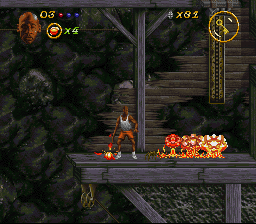
Graphics: 7
Sound: 5
Gameplay: 6.5
Longevity: 5
Overall: 6.5
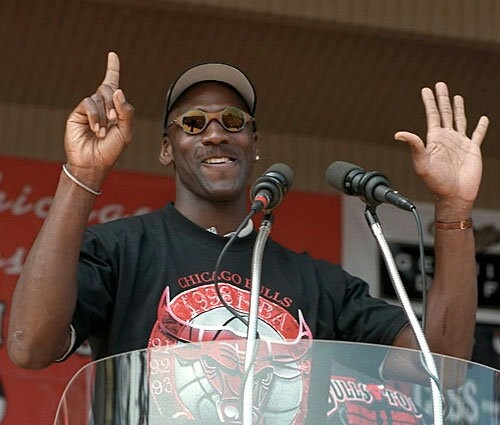

Loved this song and commercial back in the day!
But Mike, please don’t tap kids on the butt.
The stuff you got away with in 1991…
